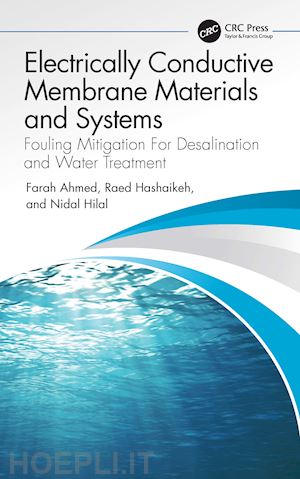Dr. Farah Ahmed is a research fellow at the Water Research Center - New York University Abu Dhabi. She is an affiliate member at the Mohammed in Rashid Academy of Scientists in the United Arab Emirates. Dr. Ahmed received her doctorate in interdisciplinary engineering from Khalifa University of Science and Technology in 2018. Her research expertise lies in the area of advanced membrane materials for desalination and water treatment, with a focus on emerging low-energy technologies. She has authored many articles in prestigious international journals and book chapters, and delivered invited lectures at various international conferences and institutions around the world. Dr. Ahmed serves on the editorial and advisory boards of a number of journals including Membranes, Separation Technologies, Nature Communications, Energies and Desalination. Professor Raed Hashaikeh is a Tenured Professor of Mechanical Engineering at New York University-Abu Dhabi and a Member of the Mohammed bin Rashid Academy of Scientists in the UAE. He received his MSc and PhD in Materials Engineering from McGill University in 2000, and 2005, respectively. In 2008. He joined the Mechanical and Materials Engineering Department at the Masdar Institute in Abu Dhabi as an Assistant Professor and went through the ranks to become a Full Professor in 2016. Between 2017 and 2019, he was a Professor at the Chemical Engineering Department, Khalifa University. Before moving to UAE, he spent two years (2006-2008) at FPInnovations-Paprican Division, Canada, as a scientist. He was awarded the Natural Sciences and Engineering Research Council of Canada (NSERC) Industrial Research and Development Fellow in 2006. He was also a visiting scholar at MIT between 2008 and 2009. He has built core strengths in materials processing, characterization and applications. The objectives of his research in electrically conductive membranes is to develop high-performing membrane materials for specific water treatment and desalination applications and to apply these multifunctional membranes to fouling control and performance enhancement. Professor Nidal Hilal is a Chartered Engineer in the United Kingdom, a registered European Engineer, an elected Fellow of both the Institution of Chemical Engineers, and the Learned Society of Wales. He received his bachelor's degree in chemical engineering in 1981 followed by a master's degree in advanced chemical engineering from Swansea University in 1986. He received his PhD degree from Swansea University in 1988. In 2005 he was awarded a Doctor of Science degree (DSc) from the University of Wales in recognition of an outstanding research contribution in the fields Water Processing including Desalination and Membrane Science and Technology. He was also awarded, by the Emir of Kuwait, the prestigious Kuwait Prize (Kuwait Medal) of Applied Science for the year 2005 and the Menelaus Medal 2020, by the Learned Society of Wales, for excellence in engineering and technology. His research interests lie broadly in the identification of innovative and cost-effective solutions within the fields of nano-water, membrane technology, water treatment, desalination and colloid engineering. He has published 8 handbooks and around 600 articles in the refereed scientific literature. He has chaired and delivered lectures at numerous international conferences and prestigious organizations around the world. Professor Hilal sits on the editorial boards of a number of international journals, is an advisory board member of several multinational organizations, and has served on/consulted for industry, government departments, research councils, and universities on an international basis.











